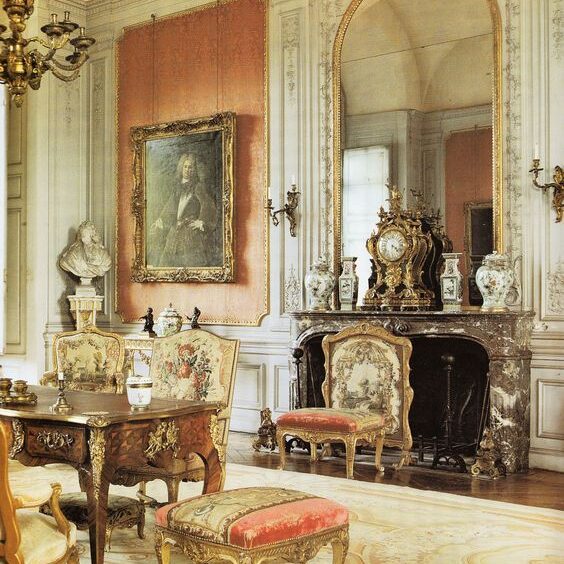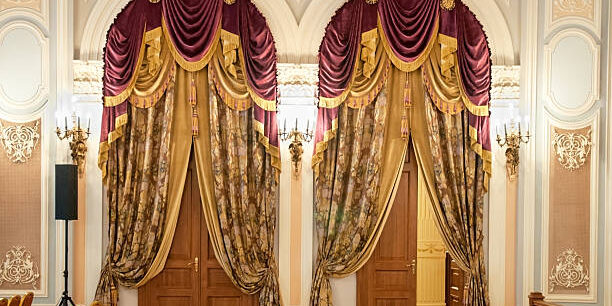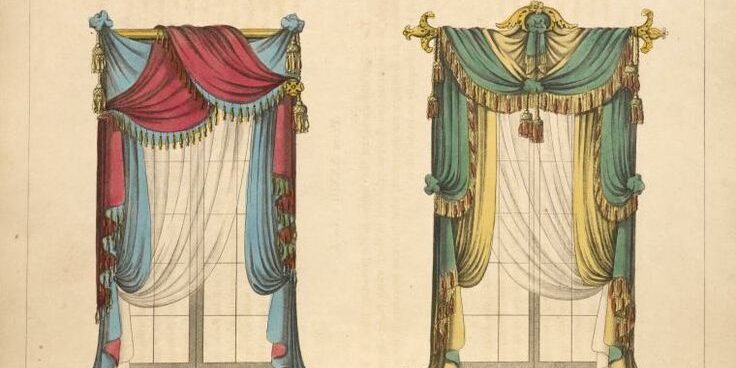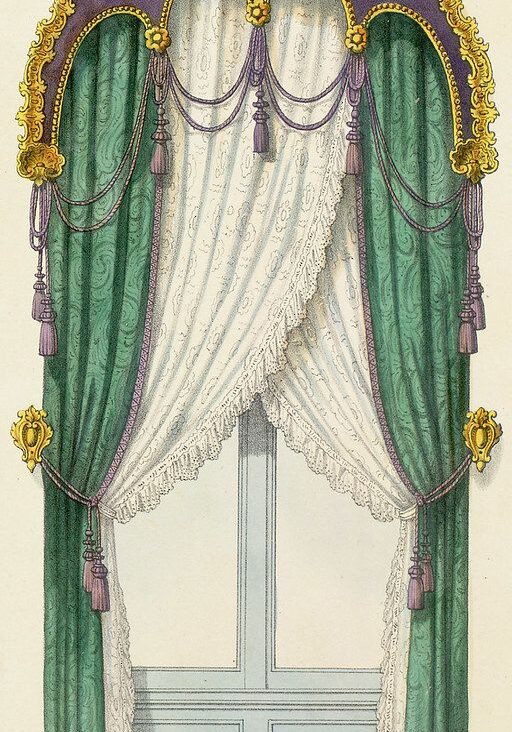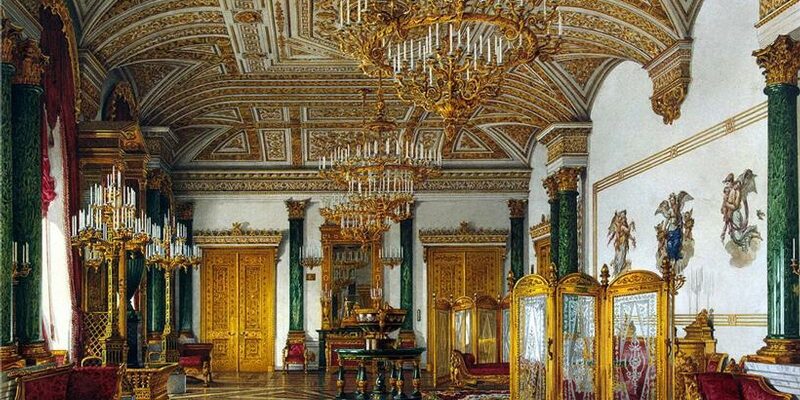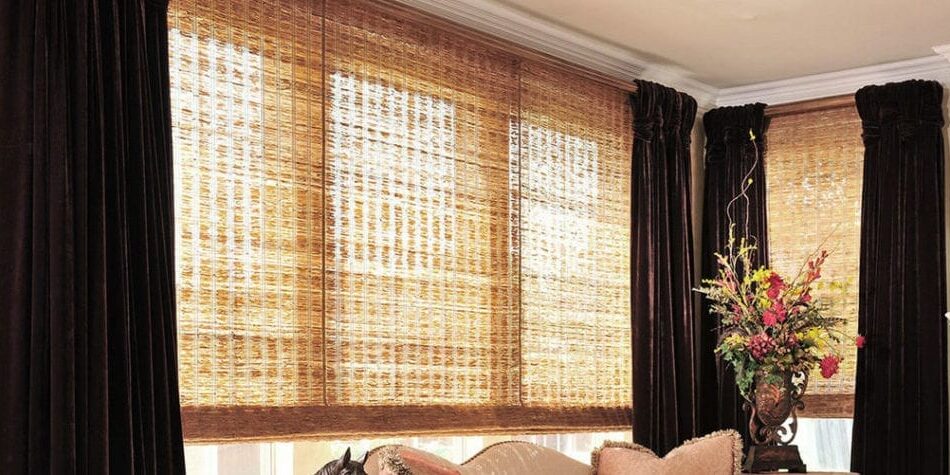Introduction
Welcome back to our journey through the history of window furnishings! In this blog, we venture into the exquisite world of curtains during the 17th and 18th centuries. A time of opulence and refined aesthetics, these centuries witnessed the evolution of curtains from symbols of status and extravagance to accessible elements of interior design for the burgeoning middle class. Let's explore how curtains took on new dimensions of elegance and luxury during this golden era of design.
The Baroque and Rococo Periods: Opulence and Grandeur in Curtain Design
The 17th and 18th centuries were characterized by two distinct yet equally lavish design movements - Baroque and Rococo. Both styles embraced extravagant ornamentation and emphasized drama and grandeur in every aspect of art and architecture, including curtains.
In the Baroque period, heavy and sumptuous fabrics like damask and brocadetook centre stage in curtain design. Elaborate draperies cascaded from windows, embellished with richly embroidered motifs and gold-threaded patterns. Drapery tiebacks and tassels became more prominent, adding an extra layer of opulence to the overall design.
As the Rococo movement emerged, curtains became even more whimsical and delicate. Lighter fabrics like silk and lace gained popularity, reflecting Rococo's emphasis on grace and sensuality. Window treatments featured graceful ruffles and intricate floral patterns, evoking a sense of playful elegance that enchanted interiors across Europe.
How Curtains Became More Accessible to the Middle Class
The 17th and 18th centuries were at times of economic and social change. As trade and commerce flourished, the middle class grew in influence and affluence. This shift in society structure led to an increased demand for luxury goods, including curtains. Textile production becomes more efficient, making luxurious fabrics more affordable and accessible to a broader range of people.
Innovations in curtain-making techniques, such as the use of printed cotton fabrics, also contributed to making curtains more affordable. These printed textiles mimicked expensive patterns, offering an economical alternative for those aspiring to achieve an air of sophistication in their homes.
The Use of Tassels, Tiebacks, and Valances for Decorative Purposes
During the 17th and 18th centuries, the decorative details of curtains gained considerable attention. Elaborate tassels and fringes were used not only to secure curtains but also to add flair and elegance to the overall design. Tassels were often made from luxurious materials like silk and gold threads, further emphasising the opulence of the interior space.
Tiebacks, too, became a significant decorative feature. Often crafted in intricate designs, these tiebacks elegantly held curtains in place while creating artistic swags and folds. Valances - decorative fabric treatments that adorned the top of curtains - added an extra layer of sophistication, framing the window and enhancing the visual appeal of the entire ensemble.
Innovations in Curtain Hardware and Installation
The 17th and 18th centuries saw significant advancements in curtain hardware, contributing to more versatile and visually appealing window treatments. Curtain rods and rings, made from materials like brass and iron, allowed for smoother manipulation and movement of curtains. This innovation provided greater flexibility in adjusting the amount of light and privacy within a space.
Additionally, new curtain installation techniques made it easier for homeowners to hang and maintain curtains. Tailored pleating styles, such as the French pleat, allowed for more precise and polished drapery designs.
As we reflect on the 17th and 18th centuries, we see curtains transitioning from symbols of exclusive luxury to attainable elements of interior design.
The Baroque and Rococo periods introduced us to a world of opulence and grandeur, where curtains became works of art that adorned the finest residences across Europe. The growing middle class, advancements in textile production, and innovative curtain hardware all play essential roles in making curtains accessible to a broader audience.
It is also really fascinating that during the 17th and 18th centuries, significant differences existed between the use and design of curtains in Europe and Asia. These variations were influenced by cultural, historical, and social factors unique to each region. Let's explore some of the key differences:
Europe: Opulence and Ornate Designs
European curtains during this period were heavily influenced by the Baroque and Rococo movements, which emphasized grandeur, ornamentation, and drama in design. Fabrics like damask, brocade, and velvet were popular choices for curtains, showcasing their intricate patterns, gold-threaded motifs, and luxurious textures.
Elaborate tassels, fringes, and tiebacks were common decorative elements that added a touch of elegance to the curtains and the overall interior space. The use of heavy drapery and multiple layers created a sense of theatricality, fitting the opulent and sophisticated tastes of the European elite. The development of curtain hardware, such as curtain rods and rings, contributed to the ease of manipulation and installation of these elaborate window treatments.
Asia: Subtlety and Symbolism
In contrast to the opulence of European curtains, Asian curtain designs were often characterized by a sense of subtlety, simplicity, and deep symbolism. Asian curtains, particularly in China and Japan, were influenced by the principles of Zen Buddhism and traditional aesthetics, embracing notions of tranquillity and harmony. The use of delicate and lightweight fabrics like silk and rice paper reflected the understated elegance favoured in Asian interior design.
Chinese silk curtains were admired for their exquisite craftsmanship and often featured intricate embroidery with motifs of dragons, phoenixes, and other symbolic elements. Japanese Noren, a traditional form of curtain, were made from fabric or split bamboo, displaying minimalist designs with symbolic patterns that conveyed messages or represented cultural themes. In both China and Japan, curtains were used in temples and sacred spaces, adding an element of spirituality to their role beyond practicality.
Cultural Differences and Influences
The cultural differences between Europe and Asia had a profound impact on curtain design. European societies were characterized by a hierarchical structure, where curtains often served as symbols of wealth, status, and power, adorning the palaces and homes of the aristocracy and nobility.
In contrast, Asian societies valued simplicity, spiritual connections, and artistic balance. Curtains in Asian homes often reflected these values through their subtle and refined designs.
Trade and cultural exchanges between Europe and Asia also influenced the design of curtains. The Silk Road, for instance, facilitated the exchange of fabrics and design ideas, leading to cross-cultural influences in curtain motifs and styles.
Overall, the differences in curtain design between Europe and Asia during the 17th and 18th centuries were rooted in their distinct cultural and aesthetic sensibilities. While Europe embraced opulence, ornamentation, and theatricality, Asia leaned toward subtlety, symbolism, and spiritual harmony in their window furnishings. These diverse approaches to curtain design enriched the tapestry of interior design history, showcasing the unique artistic expressions of each region.
Join us in the next blog as we journey into the Victorian era, a time when curtains became an embodiment of intricate elegance and societal etiquette, defining the window dressings of an age defined by its refined sensibilities. Stay tuned as we unveil the allure and splendour of curtains during this transformative period in history.

